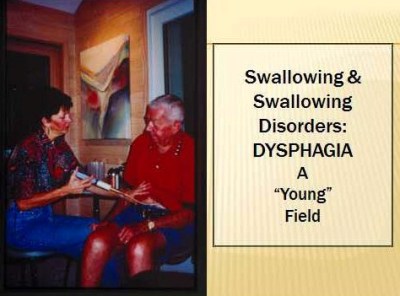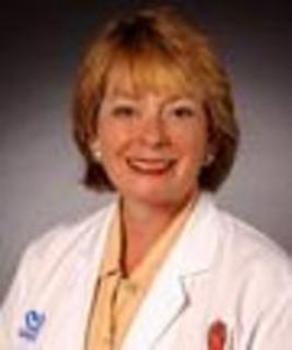Communication access realtime translation (cart) is provided in order to facilitate communication accessibility and may not be totally verbatim. The consumer should check with the moderator for any clarifications of the material.
This text-based course is a written transcript of the event, “Strength, Endurance and Exercise: Dining with Dysphagia” presented by Dr. JoAnne Robbins, Ph.D., CCC-SLP on September 19, 2011.
>> Amy Hansen: Good afternoon, everybody. Welcome to this week's virtual conference on dysphasia management. We're so pleased to have all of you joining us today and hopefully throughout the week to hear the latest in dysphagia management by an outstanding group of presenters. Today's Expert e-Seminar, “Strength, Endurance and Exercise: Dining with Dysphagia” is presented today by the highly accomplished Dr. JoAnne Robbins. My name is Amy Hansen and I'll be your moderator for today's course. I am very honored to introduce Dr. JoAnne Robbins to you this afternoon. Dr. JoAnne Robbins is a tenured Professor in the Department of Medicine at the University of Wisconsin-Madison where she holds affiliated professor appointments in radiology, nutritional sciences and bio-medical engineering. Dr. Robbins serves as Associate Director of Research for the Geriatric Research Education and Clinical Center at the Williams S. Middleton Memorial Veterans Hospital. She has been caring for dysphagia patients in her clinical practice for more than 20 years. Her research program has been funded by the National Institutes of Health and the Department of Veteran's Affairs for many years. In addition to numerous peer-reviewed publications, she also is co-author of the Easy to Swallow, Easy to Chew cookbook published by John Wiley and Sons. Dr. Robbins currently holds three US patents through the Wisconsin Alumni Research Foundation, and was President of the Dysphagia Research Society, and is honored as an ASHA fellow. We are very honored to have you with us this afternoon, Dr. Robbins. Thank you so much for joining us.
[Applause]
>> JoAnne: Thank you for having me, Amy, and thank you for the very nice introduction.
I think we all agree that swallowing, or the endurance task of swallowing – eating – is a biopsychosocial activity that is a key element of Healthy Life. Let’s define swallowing, to start out on the same foot, as moving material from the mouth through the esophagus into the stomach by a series of muscular actions, and then define dysphagia as a swallowing disorder characterized by difficulty moving the following materials into the stomach by a series of muscular actions. We have food and liquid, but we don’t want to forget about secretions and medications, particularly those in healthcare settings. Those of us working in medical settings want to be working with those providers, nurses, et cetera, to ensure that medications are swallowed in the patient’s best interest as well with some of the interventions in place that we'll talk about today. Dysphagia is, I think we would all agree, an element of unhealthy life.
Swallowing and swallowing disorders is a fairly new field or part of speech-language pathology. We're a young field studying swallowing. It came into our scope paragraph in the late 1980s. Prior to that, this is a good image to remind us of the primary way patients with dysphagia were cared for:

Gastrostomy tubes were put in the stomach and the oropharyngeal mechanism was bypassed essentially and patients were fed right into the lower part of the system. This is actually somebody who became a patient here who had been told he would never eat by mouth. He had a stroke, and he’d been around the circuit with speech pathologists. This is his daughter here actually having a meal with him – he's doing all the consuming, of course, with her help. We did, in fact, move this fellow from G-tube feedings to full oral eating with some of the strategies that we will be talking about today.

